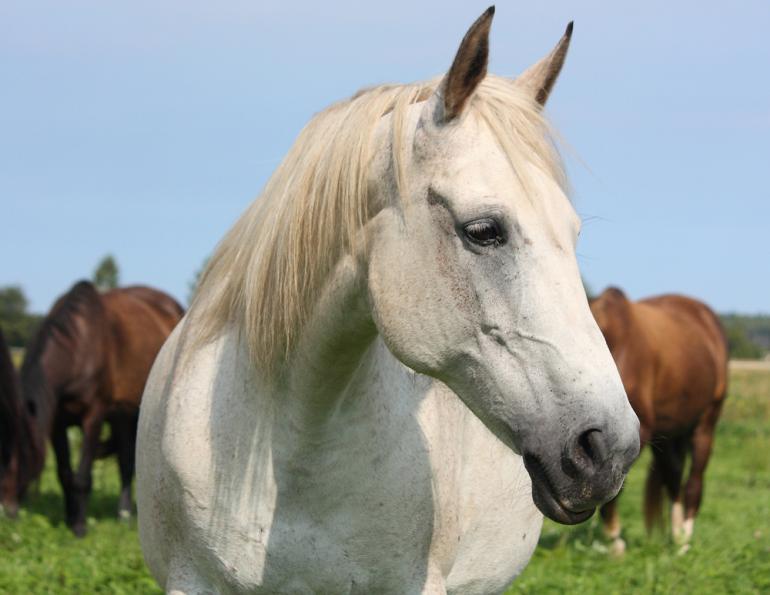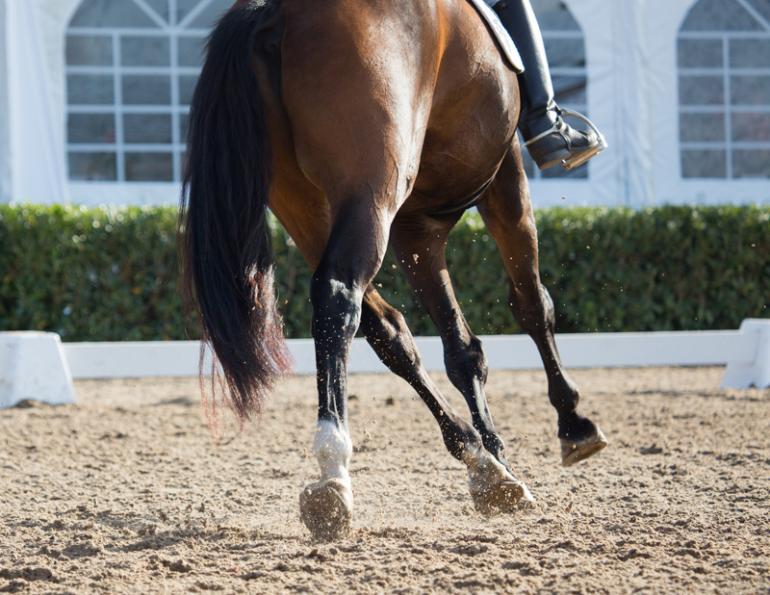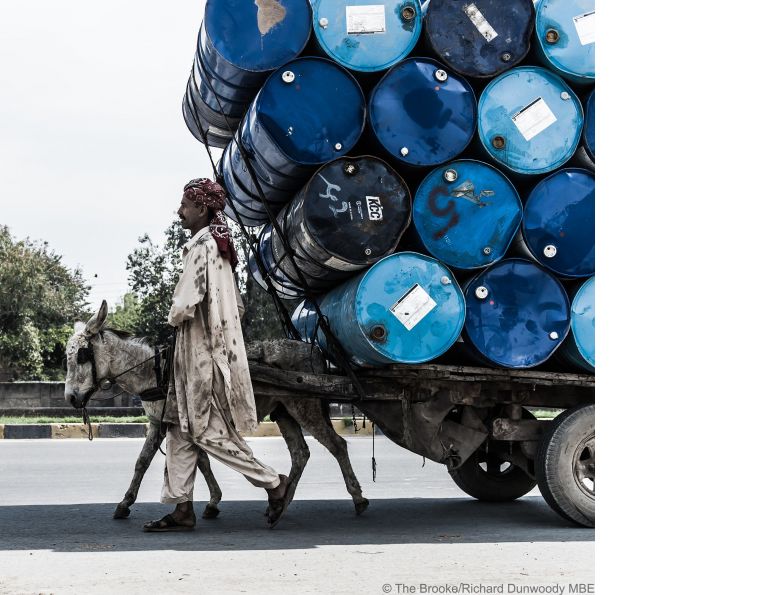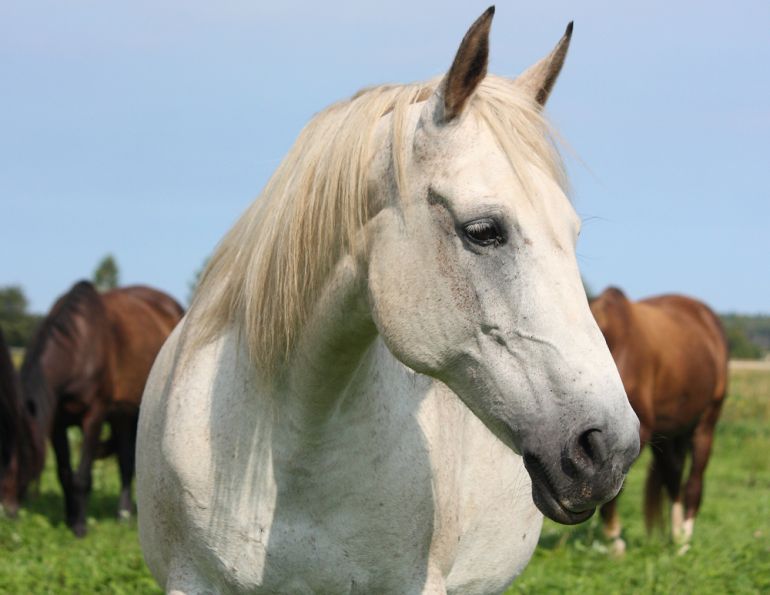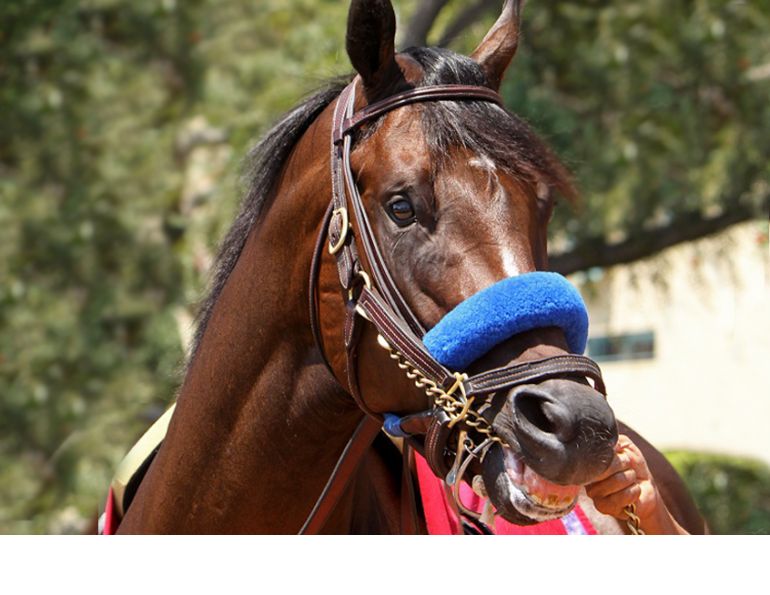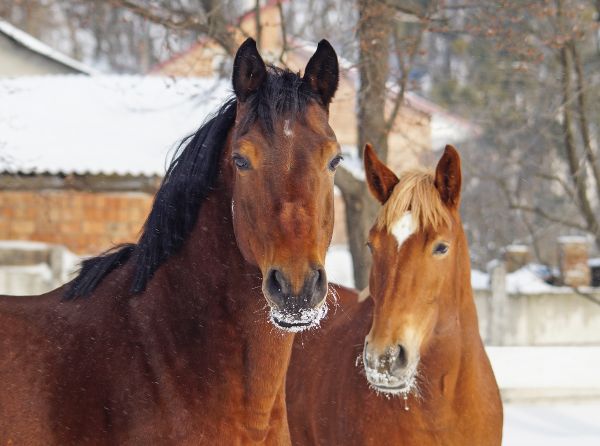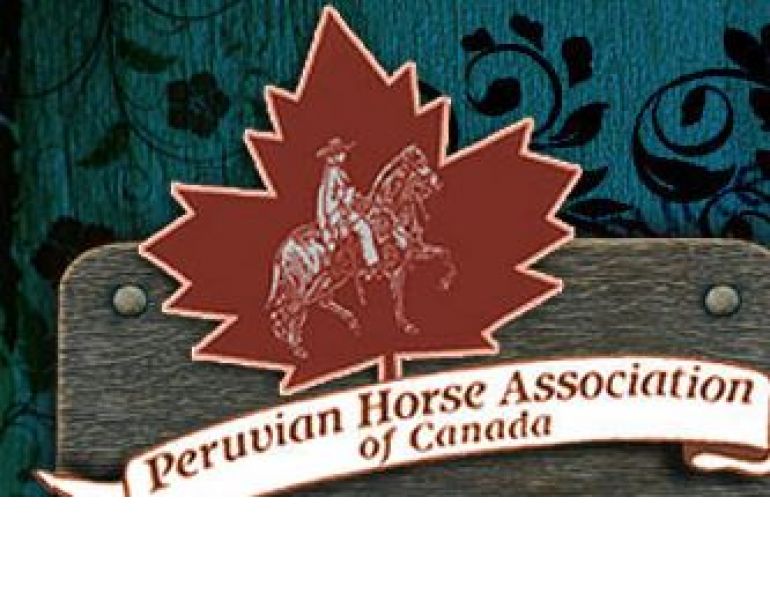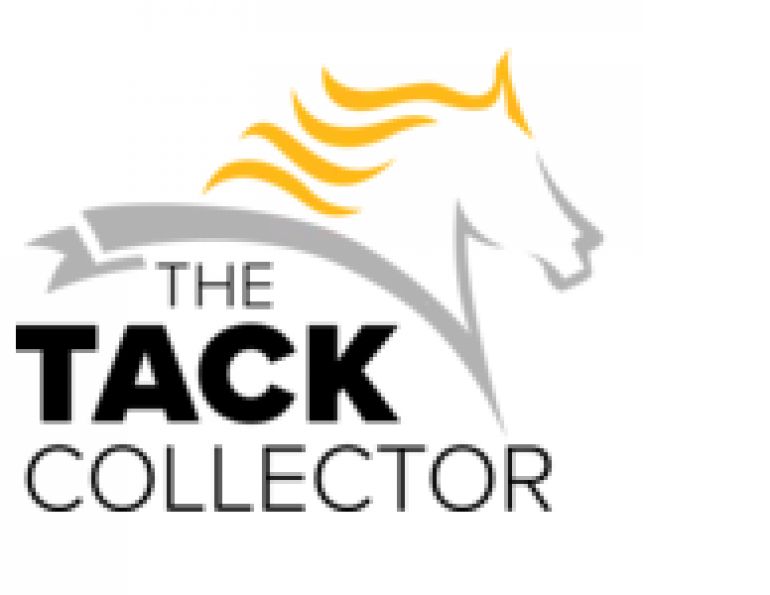By Margaret Evans
From out of the sands of time comes a horse as unique and as treasured as the spires and domes of the temples, palaces, and forts that carve the skyline of Rajasthan, India. This is the Land of the Kings, the state of princes and peasants, the turf of warriors and Rajputs who fought with chivalry and valour.
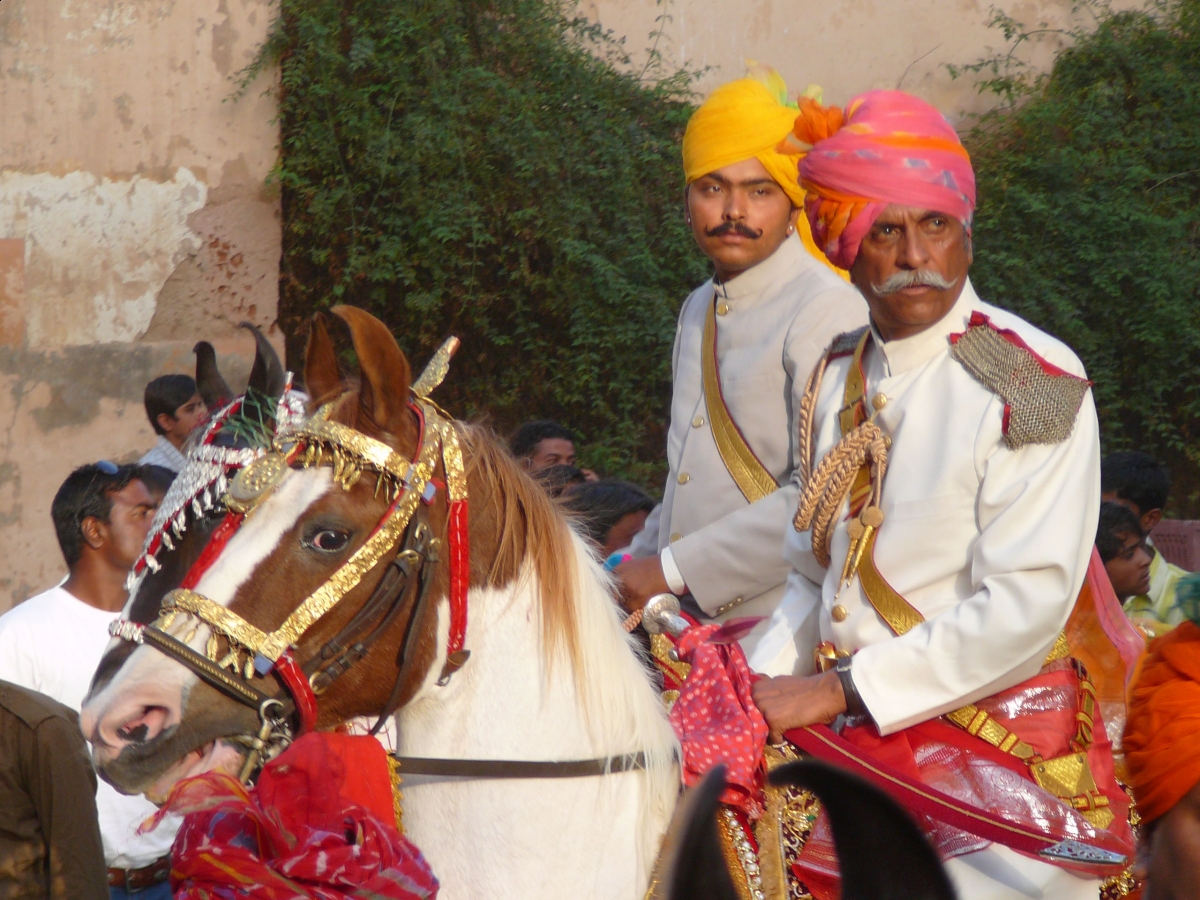
Rajput nobility Dr. Rao Ajeet Singh Narlai (left) and Kanwar Raghuvendra Singh Dundlod, Secretary General of ISHI (right), on parade at Ganguar Festival. Photo: Caroline Moorey
This is a place where each cherished cultural icon — music, song, dance, art, festivals, fairs, and handcrafted wares — is a sparkling jewel in a necklace clasped by the stunning geography of desert, mountain, and river valley. It is a land of story, legend, myth, and wondrous animals. It is the land of the cavalry steed of the Rajputs, the Marwari horse.
It is said that long ago a vessel from Arab lands was shipwrecked off the shores of the Kachchh district. Seven Arabian horses were rescued and taken to the Marwar (Jodhpur) district of Rajasthan where they became foundation stock bred with the tough, hardy Indian ponies. From the bloodline came a horse 15 to 16 hands high with a slender neck, long back, deep chest, and clean legs with tough hooves. Greys, bays, and pintos became favoured colours. But its distinction is in its face with its straight profile, wide-set kind eyes, and stunningly unique lyre-shaped ears that curve inward.
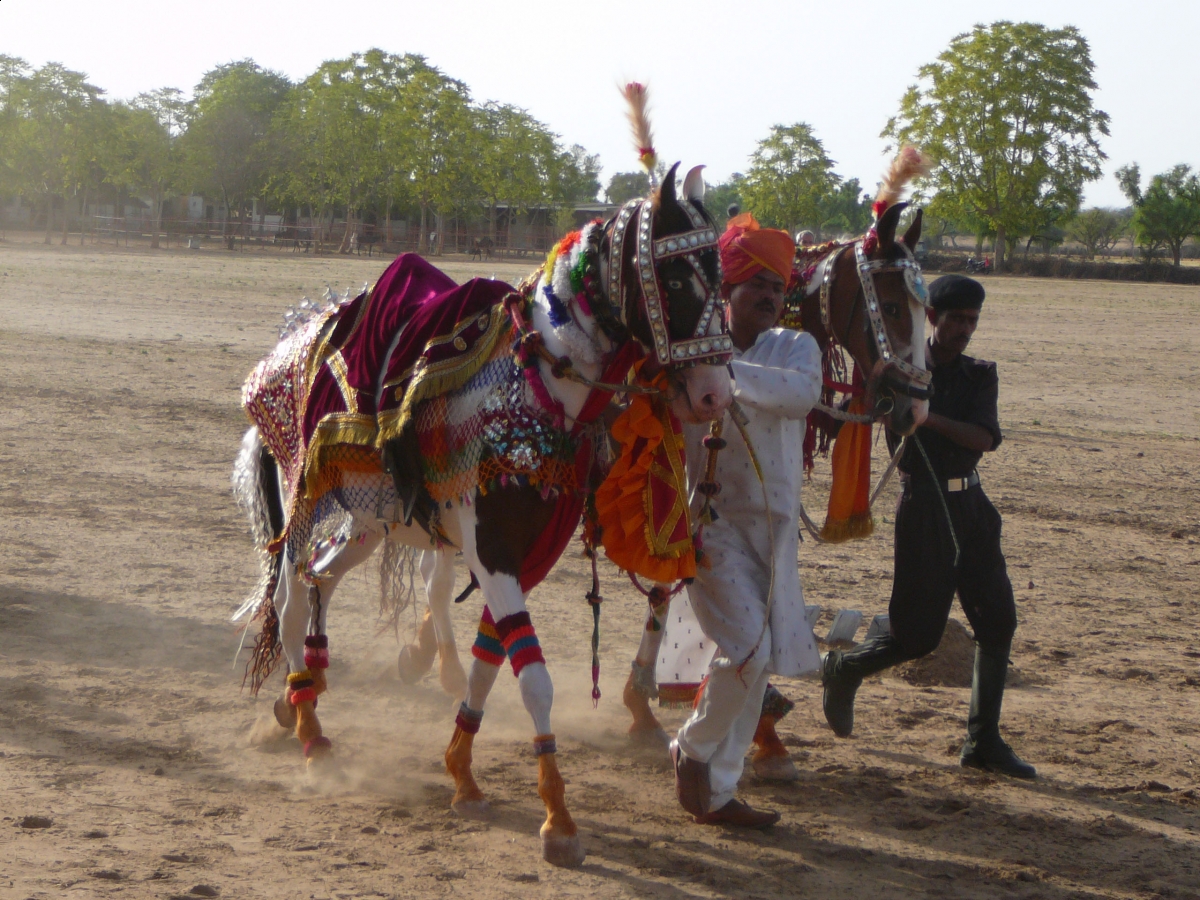
Marwari marriage horses in stunning colours and costume. Photo: Caroline Moorey
The breed dates back to at least the 12th century. These dependable, enduring horses with their natural ambling gait very similar to a pace were vital to the survival of the Rathores, rulers of Marwar. They were exalted as divine beings and were only ridden by royalty and the warrior caste. The Moguls captured northern India in the 1500s and brought with them the influence of the Turkomen horses. The Marwari horse continued to excel in war and on the battlefield until the advent of The Raj (British colonial rule in south Asia from 1858 to 1947) when the breed was sidelined by the colonials in favour of Thoroughbreds and polo ponies.
By the early 1900s the Marwari horse was almost extinct as many had been castrated, sold as pack animals, or killed. It took the dedication of Umaid Singhji, the Maharaja of Jodhpur, to intervene and save the breed, work that was carried on by his descendents.

Marwari marriage horses in stunning colours and costume. Photo: Caroline Moorey
But still indiscriminate breeding continued to threaten the Marwari horse until, by the 1990s, only a few thousand purebreds were left. In 1995 Marwari Bloodlines was formed and in 1999 the Indigenous Horse Society of India (IHSI) was created to preserve the country’s equine heritage which includes six different breeds: Marwari, Kathiawari, Spiti pony, Bhutia pony, Manipuri pony, and Zanskari. Today, the Marwari is valued as a working and competition horse, a pet of status, and a marriage horse.
“In rural areas most Marwari are used for weddings where it is auspicious for the groom to arrive astride a Marwari amidst brass band and fireworks,” explained Caroline Moorey, chairperson of Friends of Marwari/Kathiawari Horse UK, a charitable organization dedicated to the improvement and preservation of the breeds.
“It can take up to an hour for the groom to ride perhaps one mile (1.65 kilometres) as the bharat (groom) party dance and sing him slowly to his destination. These marriage horses are worth their weight in gold to the owner, as in India it is always marriage season! Other Marwari are kept for the love of it, I guess like a pet, as something to look after and be proud of. (They are) usually mares for breeding with the offspring being sold at the fairs as a source of extra income. Some are used to pull a tonga (buggy cart).”
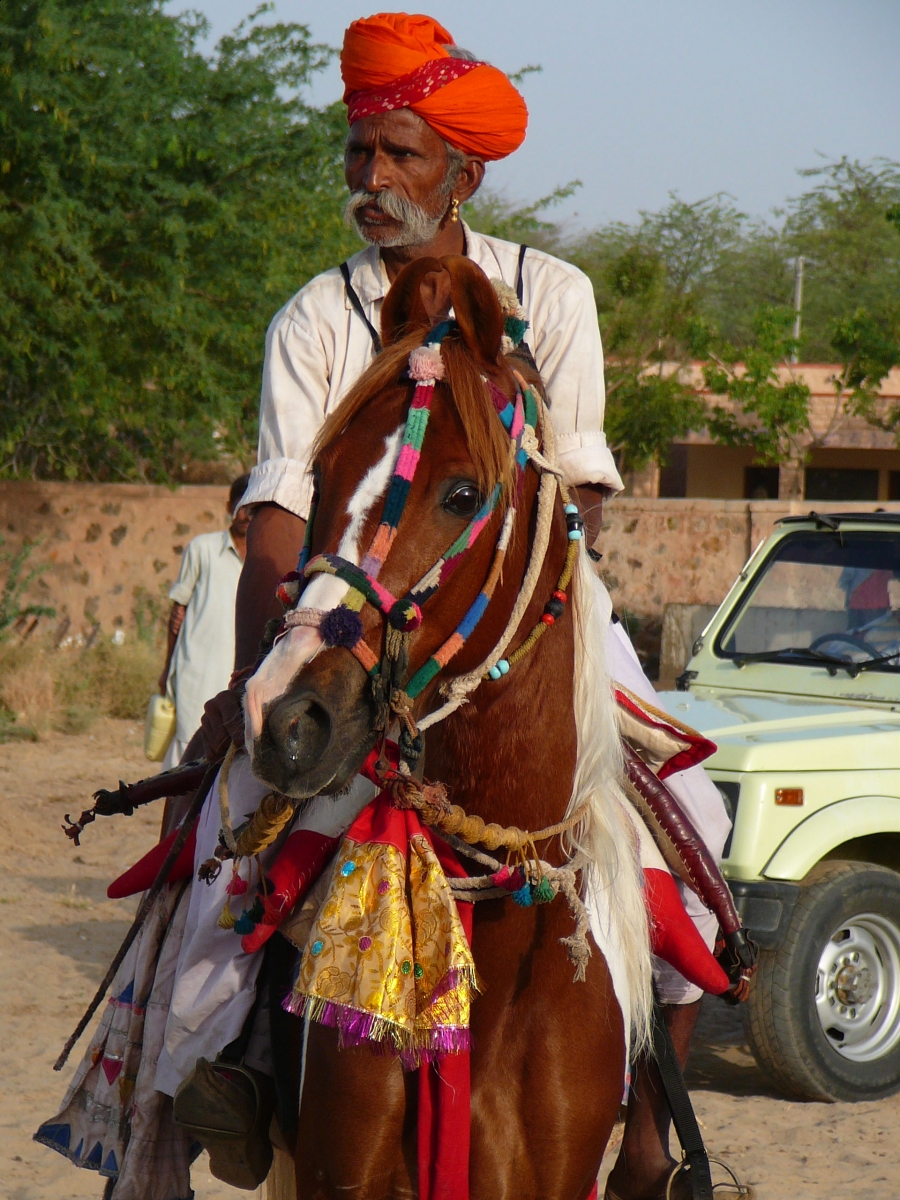
A competitor waiting to start in a local endurance race at Balotra Fair. Photo: Caroline Moorey
Moorey has visited India a number of times. In 2004 she enjoyed a safari ride in Rajasthan on a Marwari horse. She has been back at least ten times, judged at a horse show twice, and in 2008 she formed an all-ladies Great Britain endurance team for the first Indian International Invitational Endurance Race. They competed on borrowed Marwari horses.
“The horses are so suited to the desert conditions, always willing,” she wrote in an email interview. “They have a spirit rarely found in other breeds. They would carry you to the end of the earth without question. We took Gold in the 50 kilometre in 2008 and team Bronze in the 81 kilometre in 2009, all riding Marwari horses.”
In a nation where owning and riding horses is traditionally a man’s sport, the ladies’ team caused some commotion. As would be standard in a Western world endurance competition, they took their heart rate monitors to check their mounts during the ride. They raised eyebrows among competitors but they willingly shared their knowledge on the value of monitoring a horse’s heart rate and cooling down properly. Cultural push-back aside, the men were eager to learn, could see the ladies knew what they were doing, got results, and were generous with smiles and advice. Reinforcing the need for the horse’s welfare was a great bridge-builder.
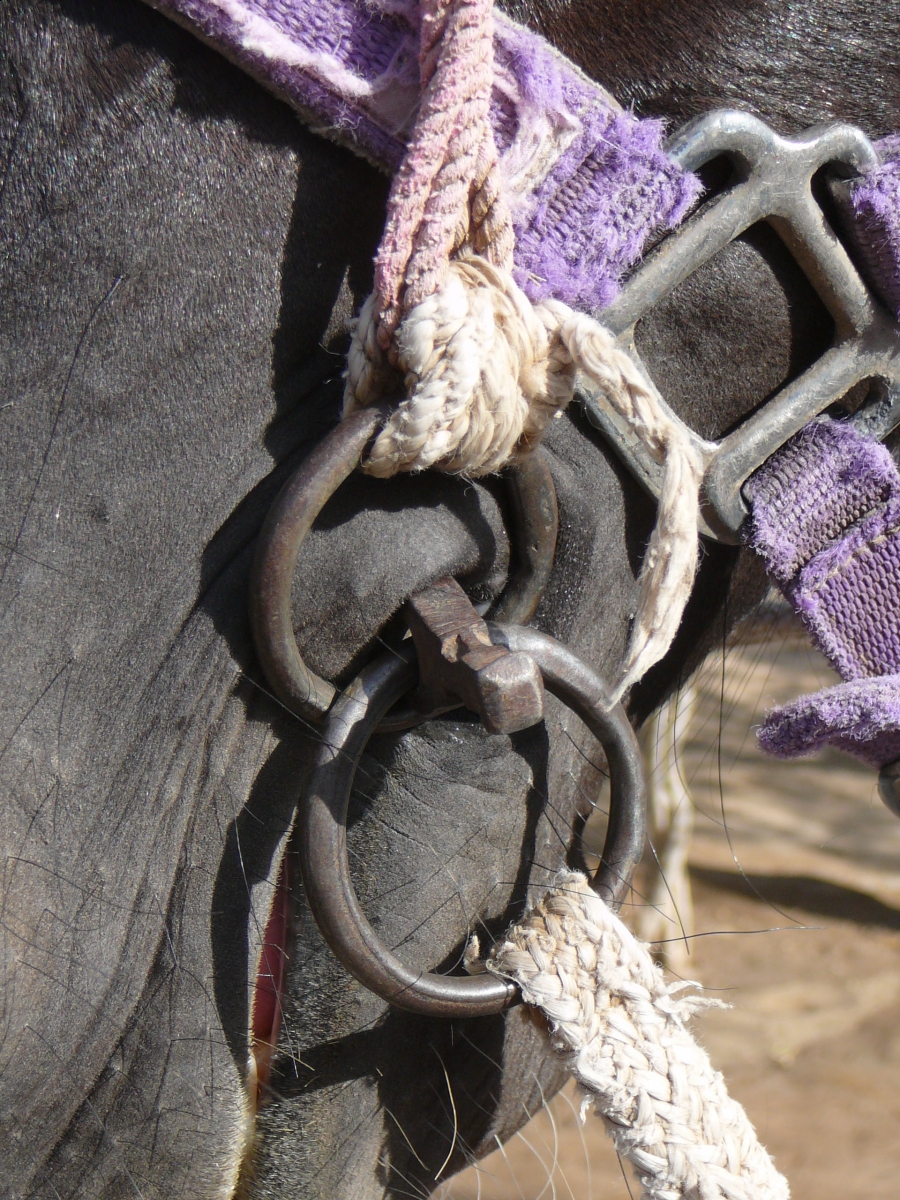
A handmade bit in a horse’s mouth. Unlike western bits, these handmade bits have jagged edges and sharp spikes. Photo: Caroline Moorey
“Owning a heart rate monitor is definitely the way to be popular in India!” Moorey said.
Not only that, the entry of the all-ladies team triggered a can-do attitude among some Indian ladies. It is a rarity to see women on horseback in India but apparently the team from Great Britain became a catalyst for girls and ladies to get mounted.
India is a huge country with a population of 1.1 billion. It has the world’s 12th largest economy (third largest in Asia behind Japan and China) and had a GDP in 2008 of $1.21 trillion.
Yet it is still a country of mass contradictions with half the population dependent on agriculture and 700 million struggling to live on under $2 a day. Despite the adoration and pride in the Marwari, the horse is still the victim of harsh practices driven by frugal local economies.
In rural areas the bits used on bridles are crudely made from local metals and roughly filed into shape. As a result, they are sold with sharp, jagged edges or spikes that cause pain, bleeding, and immense suffering in a horse’s mouth. It is not so much malice as it is lack of knowledge and understanding that allow these bits to be sold and used.

A handmade bit has caused injury and bleeding in this horse’s mouth. Photo: Caroline Moorey
“In the cities there are bit manufacturers who make our western bits (mostly in Kanpur) but they are mainly for export at western prices,” said Moorey. “They never reach rural horse-owning communities.”
Moorey explained that local bit makers sell their crudely filed bits at rural fairs for around 15 rupees a piece (one Indian rupee equals about two cents Canadian). But, as she commented candidly, she still does not understand how Indians can love and be proud owners of a horse yet ride it with a bleeding mouth and not understand that something is wrong.
To that end, her organization Friends of Marwari/Kathiawari Horse U.K. began a bit donation program. In response, riders throughout England donated a variety of snaffle bits all between four and five inches in width.
“The first shipment of 80 bits went in March 2010 to the Mallinath Horse Fair at Balotra, known as the Balotra Fair south of Jodhpur,” said Moorey.
“We are working in tandem with the Indigenous Horse Society of India which is run by Indians and they take the lead in how we market the scheme to their own Indian horse community."
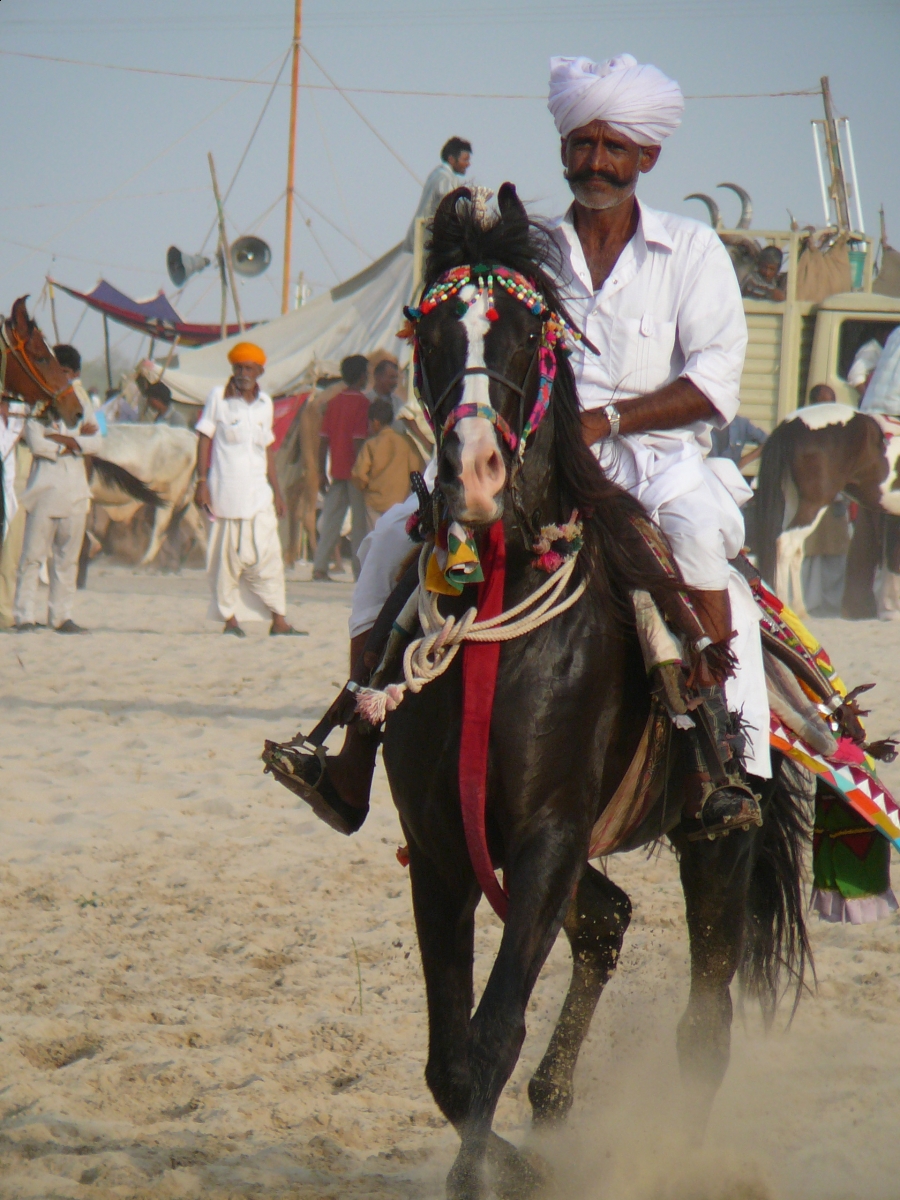
A local rider at Balotra (Mallinath) Horse Fair. Photo: Caroline Moorey
"At the fair, the team found a very receptive audience among the locals and created quite a gathering each time bits were being donated. There was much explanation of the benefits of a kinder bit to the horse’s mouth. Traders were encouraged to exchange a number of the more severe and crude locally made bits for the kinder U.K. donated snaffle bits.”
Moorey was delighted when local bit manufacturers approached the team to ask if they could have bits to copy. They were each provided an eggbut snaffle and a full cheek French link.
The team made sure they understood that the mouthpieces must be smooth and that they should copy them exactly. They left happy to have new projects to work on with the assurance the team would follow up on a later trip to check their progress.
It was never Moorey’s plan to swamp the Indian market with donated bits. Instead, the plan is to work with IHSI which is very active in educating and training local people in farriery, veterinary care, and equine dental techniques.
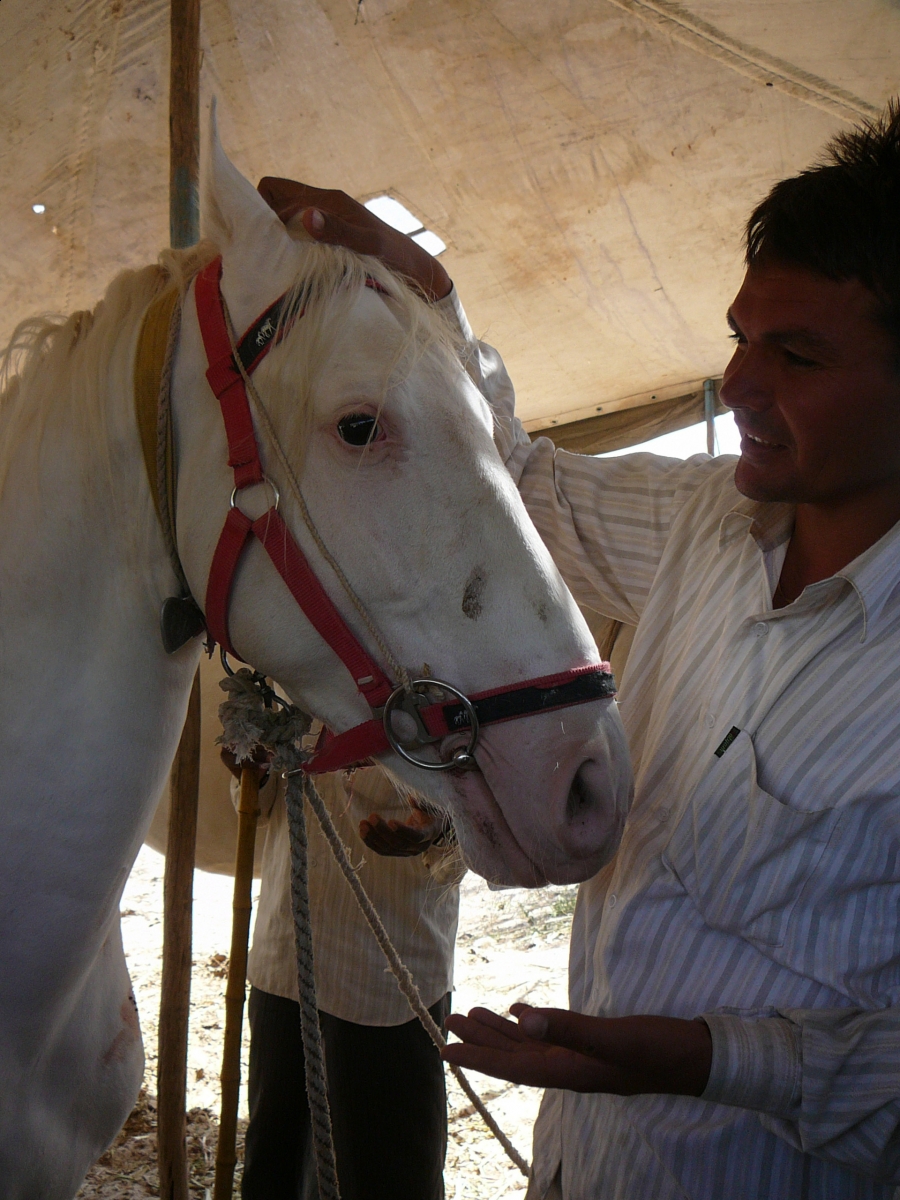
A Marwari horse trying on a loose ring snaffle bit for size. The horse and his owner look pleased! Photo: Caroline Moorey
The bit donation plan fitted perfectly into their line-up of programs. The direction is to trickle-feed selective influential horsemen at the fairs in the hope that, over time and with a steady supply of bits and educational support, the majority of horses at the fairs in Rajasthan will have plain snaffle bits in their mouths.
“The future of the Marwari horse is looking more promising than say in the 1970s when it was apparent they were ignored,” said Moorey, adding that research on the origins of the bloodline to determine the extent of the Arab influence and possible links to the Akhal-Teke breed from Turkmeni horses has been undertaken in recent years by the UK’s University of Cambridge. Their findings have not yet been published. Much is being done to promote the breed in India and potentially abroad by ISHI.
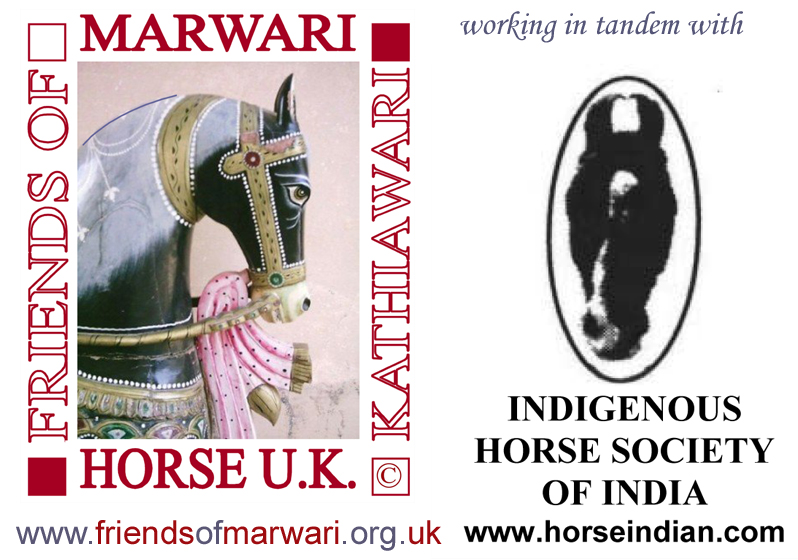
Photo: Courtesy of Caroline Moorey
The bit donation program has caught the imagination of riders abroad who want to be involved. If anyone in Canada would like to donate a bit to this cause, contact Caroline Moorey at info@friendsofmarwari.org.uk.
More information about the bit program and the Marwari horse can be found at their website www.friendsofmarwari.org.uk. The next shipment of bits will be going to India this fall. Alternatively, readers can contact me for more information.
Main photo: Caroline Moorey - An example of a handmade bit used on Marwari horses.




